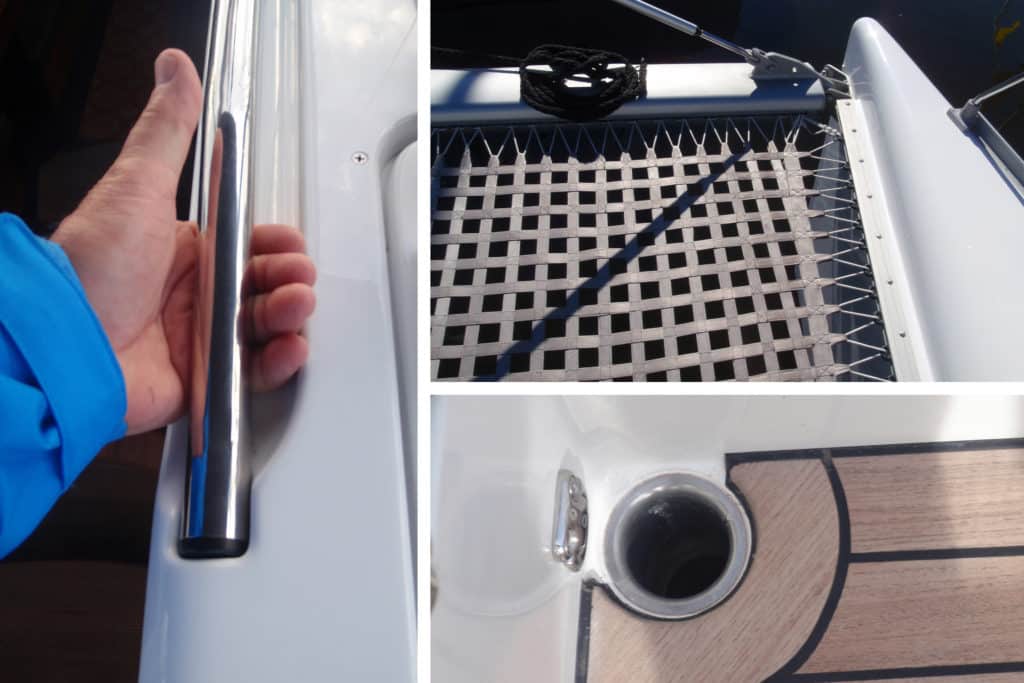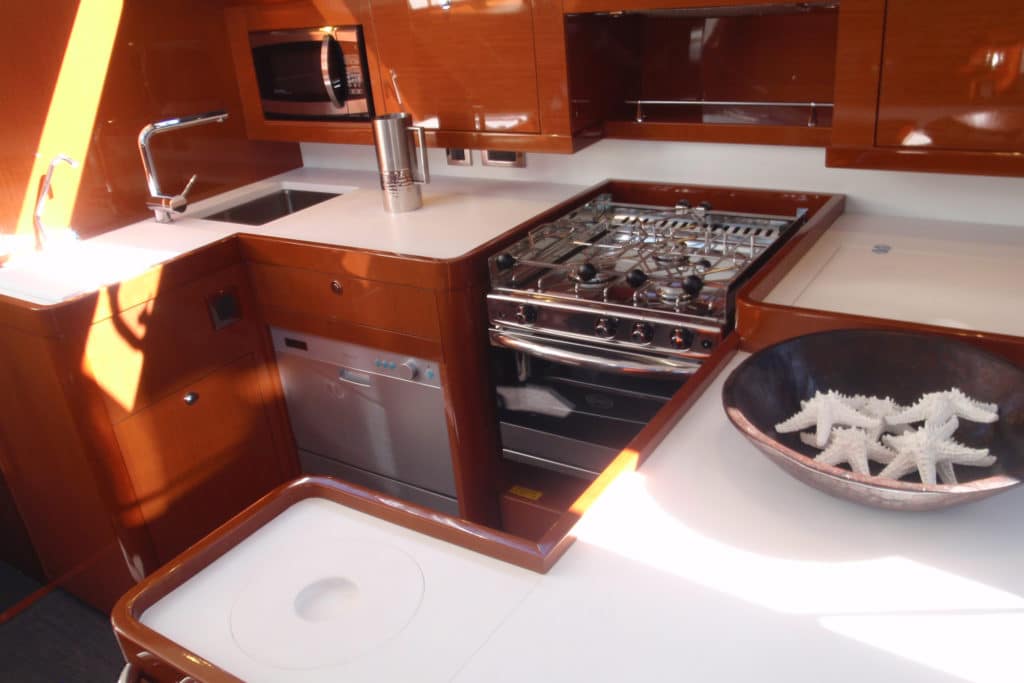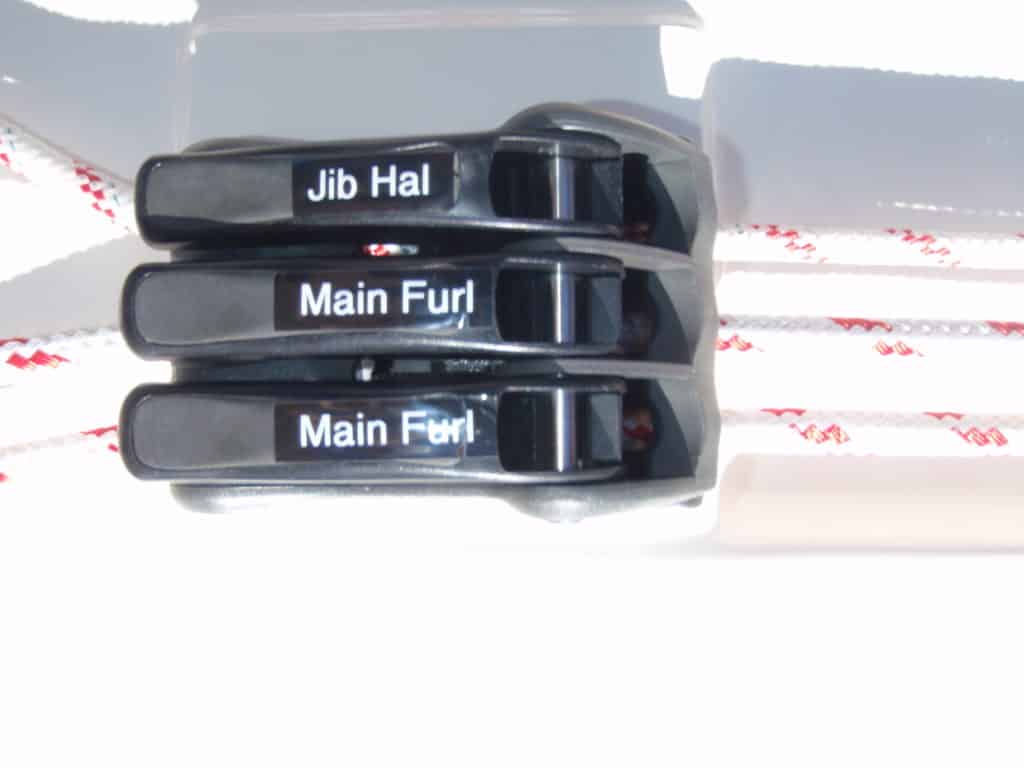
The judges of the Cruising World Boat of the Year contest, a panel I’ve served on several times, often disagree about what makes a boat aesthetically pleasing, a good performer, or suitable for a stated purpose. But when it comes to what makes a boat safe, we all harmonize from the same hymnbook. After all, Mother Nature throws enough risk at us via wind, waves and shoal waters. We don’t need to carry our own hazards along with us when we leave the dock.
As an offshore sailor, I ask the same simple question whenever I first step aboard a boat: “What structure stands between me and the deep blue sea?” Pushpits, pulpits and stanchions should exceed the ABYC minimum requirement of 24 inches in height, be robust enough to withstand the forces of a large human body being violently tossed across the deck, and have no built-in “boat bites,” like sharp angles or protrusions. I prefer the old-fashioned way of anchoring these features with a bulwark, as the rise on the side deck creates an efficient fastening system and removes any potential toe-stubbing hardware from the deck itself. Such bulwarks also enclose the side decks and capture the feet when one moves forward while on a pronounced heel. The little windage they add is a small price to pay for keeping the decks dry without actually raising them further off the sea.
Which leads to the next concern: In an attempt to maximize interior volume, modern designers are tempted to simply raise the entire deck structure. Yet if this is done without commensurate addition to draft and ballast ratio, increasing the static stability (known as metacentric height), one feels as if the boat is malevolently trying to pitch the crew into the unforgiving ocean; it is. The characteristics of tracking, pitch, yaw, heel, reserve buoyancy, and the penchant to broach are collectively known as “seakindliness.” Out there on an open sea, that quality is far more important than the color of the cushions.
Nonskid is my next priority, because a fall creates no minor injury a thousand miles offshore. The nonskid should be aggressive and strategically placed. To determine where I actually need nonskid, I walk barefoot on the dock for a few minutes to get my feet dirty, and then go for an afternoon sail. Back at the dock, I find the tracks of my day written on the deck, and inevitably find footprints on large and slippery hatches, sloping cabin sides, cockpit coamings, and points of exit and entry onto the boat. Even if changed to a less aggressive and more attractive style, the nonskid should run below, onto the companionway steps and the saloon sole. This is a high-traffic area, often wet and too often steep. The steps should have the shallowest inclination possible, with captured sides or significant bevels.
“One hand for yourself and one for the ship” only works when there are numerous and accessible handholds. I follow those same dirty footprints and ensure that there are stout handholds all the way forward and aft that are not impossibly low to grasp. But handholds can be misplaced and misshapen. I slide my hand down the length of any handhold to see if it tapers into sharp angles that can jam and break fingers.

Handholds alone cannot guarantee that no one ever goes overboard. Thus the placement of padeyes for safety lanyards is important, as is the long and unobstructed run of strong jacklines. The aforementioned “one hand for yourself” is most difficult when you’re working at the mast, and no number of lines running aft to the cockpit can ensure that one never has to go forward. I love to see mast pulpits installed, but they need to be high enough for a sailor to lean safely back upon, and placed far enough back from the mast to allow one to operate the winch handles in a strong working posture.
Along those same lines, clear labeling of every line at the mast and the cockpit clutches greatly reduces the risk of, for example, accidentally releasing the topping lift and dropping the boom into the cockpit. This should go without saying, but alas, it does not: The boom must be of sufficient height and placement that it never, ever comes into contact with the human head. Especially when the bridgedeck is elevated, the main companionway is Concussion Central, and at the least, there needs to be a strong dodger protecting emerging crew.
Trying to retrieve a life raft covered with wet lines and fenders from the bottom of a deep locker does not constitute a proper deployment system. The raft must be well secured yet accessible. A designated locker is best, as rafts lashed to the deck or mounted on the rails may be damaged or even carried away by extreme seas. Ironically, the most popular location is on the cabin top, under the boom. The destabilizing effects of a heavy raft being installed that high above the water aside, it is logical to assume that the conditions that force one to abandon ship will be rough indeed. Trying to deploy a raft from that height, just beneath a wildly swinging boom, is not the ideal scenario.
Even though most boats are owned by couples, when passagemaking, usually only one person is at the helm. It is essential that he or she has unobstructed access to the main and headsail sheets in the event of knockdown gusts or a sudden emergency. Visibility from the helm is another safety concern, not just forward and for periodic 360-degree sweeps, but up to the sails and masthead wind indicator.
On one of my Pacific crossings, four out of four Maydays I heard on the radio were related to steering failure. As the simplicity of tiller steering is replaced by wheel and pedestal, it is essential that the steering mechanisms be carefully designed, properly installed, and accessible for regular inspection and maintenance. However, none of these precautions is foolproof. The emergency steering system must be easy to engage, positioned in such a manner that it provides the helmsperson with safe visibility, and able to create ample steering leverage to maneuver the vessel without completely exhausting the crew.

The latest trend in open-ended transoms all but eliminates the issue of slow-draining cockpits. But for those boats with more traditional enclosed cockpits, I always check the number and diameter of the scuppers, as well as their screens. No drainage system, however, can guarantee the absence of downflooding in extreme circumstances. Nor does the ingress of water always come from the companionway. Therefore my next trip is to the bilge, to ensure that there is a proper collection sump, plenty of large limber holes, and an electric bilge pump with a capacity of 2,000 gallons per hour or more. An automatic float switch should be connected to this pump. There should be a large manual pump in the cockpit, preferably a double-action model. All pumps should have intake screens accessible for cleaning.
I prefer acrylic washboards, which allow for visual communication between the cockpit and below. However, I feel strongly that those washboards should not be tapered slide-ins, but rather hinged, drop-down and recessed, or even saloon-style swing doors. It is nearly impossible to slide out two tapered boards, step over the remaining one, and replace them before gale-force winds whip them overboard or the next wave hits. I also look for dual-access latches on the main hatch, which do not lock anyone either on deck or below, as does the traditional dead-man bolting system.
Liquefied-petroleum gas tanks must be secured in a locker that vents overboard. I trace the gas hose back to the stove, looking for sharp bends or areas of chafe where it passes through bulkheads. The hose must have sufficient slack in it to avoid taking the force of the full gimbal on the marine stove.
Ideally, the galley should be U-shaped or L-shaped to keep the cook secure. All cabinetry corners in areas of high traffic must be rounded. The stove must be properly gimbaled and fiddled to keep heavy pots of boiling liquid from launching themselves across the cabin. Heavy Corian sink and stove lids should be securable so they do not become deadly missiles in a knockdown situation.
Fire extinguishers and fire blankets must have designated stations at opposite ends of the vessel. The engine cover should have a marked port that a fire extinguisher can shoot through into the engine room without letting in a flood of fire-fanning oxygen.
I consider hidden dangers behind the exterior finish, such as jagged glasswork, protruding bolts, frayed cable and exposed electrical wires, to be canaries in the mine shaft. They portend more trouble and perhaps the manufacturer’s penchant for prioritizing style over substance. In short, a safe boat is usually a good boat. When searching for your next dream boat or refurbishing the cherished old one you already have, take a day to scour it stem to stern, focused on safety issues alone. This will pay dividends in health and happiness for years to come.








